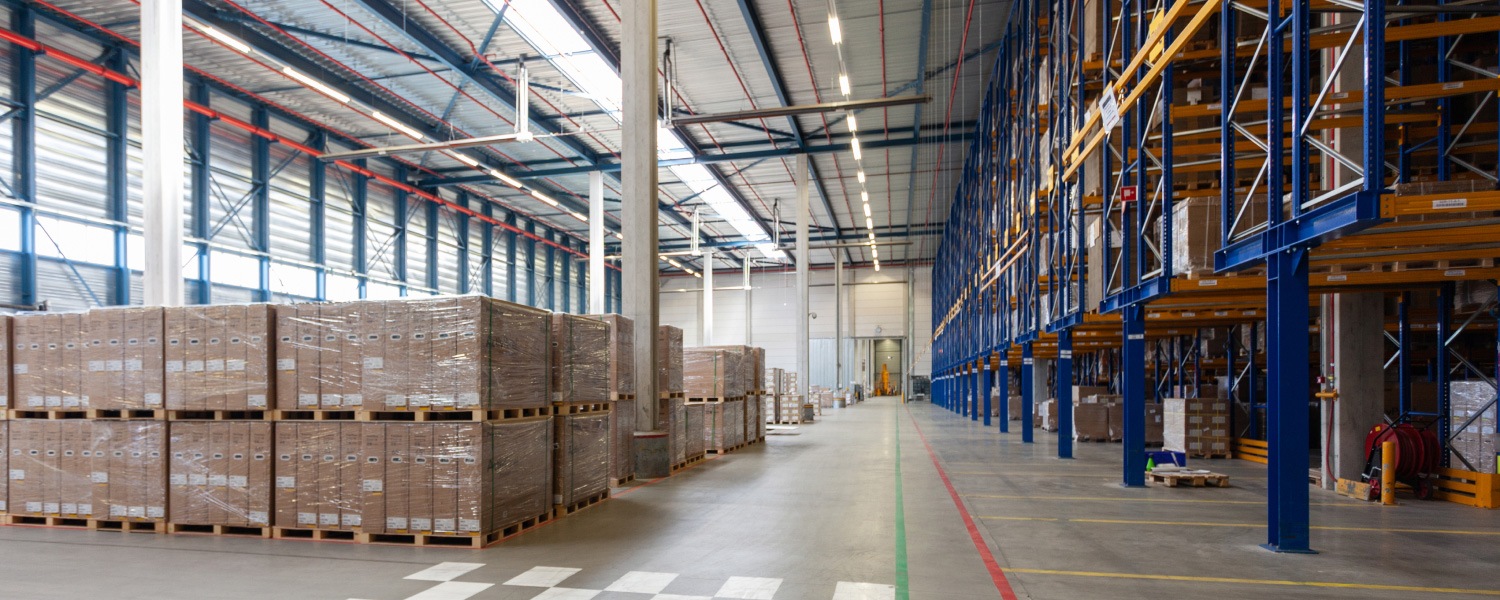Think of a busy warehouse, with goods constantly being shipped in and out, and every action working like clockwork.
But beneath this efficient surface, there’s a hidden environmental cost, as these operations significantly contribute to our carbon footprint.
Warehousing operations are estimated to contribute up to 11% of the total greenhouse gas emissions in the logistics industry. This statistic shows the urgent need for change.
Transitioning to a green warehouse isn’t just about lowering carbon emissions; it’s about enhancing efficiency, cutting costs, and building a more resilient supply chain.
A green warehouse is the future. It’s not only an environmental necessity but also a smart business strategy.
Let’s check out the five strategies to transform your traditional warehouse into an eco-friendly green warehouse.
Implement our tried-and-true tips to make your warehouse operations greener and contribute to a sustainable future for all.
What is a Green Warehouse?
Green warehouses are facilities designed to emphasize sustainability and eco-friendliness in their design, construction, and operations within logistics and supply chain management.
These warehouses strive to lessen their environmental impact by adopting strategies that lower energy usage, minimize waste production, and encourage overall environmental betterment.
Green warehousing can include using energy-efficient lighting, recycling programs, renewable energy sources like solar panels, and advanced insulation techniques to reduce heating and cooling needs.
The goal is to create a warehouse that not only operates efficiently but also supports the health of our planet.
5 Steps to Build a Sustainable Warehouse

You are a warehouse manager, standing at the edge of your busy warehouse, watching the constant flow of activity.
It’s efficient, sure, but you can’t shake the feeling that there’s a heavy environmental cost to all this.
You’ve been thinking about making a change, about turning your traditional warehouse into a sustainable warehouse.
It’s not just about cutting energy bills or reducing waste; it’s about creating a greener, more responsible operation.
So, where do you start? It can seem overwhelming, but don’t worry. We’ve got you covered.
Here are 5 essential steps to help you build a sustainable warehouse.
1. Choose a Sustainable Site
When choosing locations for green warehouses, it’s important to prioritize areas that minimize environmental impact and potentially contribute to ecological well-being.
Consider these factors:
- Proximity to Suppliers and Customers: Select locations close to your supply chain to reduce transportation emissions.
- Sustainable Transportation Access: Look for sites near railways or ports to use more eco-friendly transportation methods.
- Renewable Energy Availability: Opt for locations where renewable energy sources are accessible.
- Ecologically Neutral Sites: Avoid locations with significant ecological value to protect natural habitats.
- Sustainable Infrastructure: Develop sustainable infrastructure around your facility to support environmental goals.
By carefully considering these factors, you can ensure your warehouse not only operates efficiently but also aligns with your commitment to sustainability.
2. Integrate an Energy-Efficient Warehouse Management System
Are you still relying on traditional warehousing practices? It’s high time to opt for a modern WMS.
Integrating an energy-efficient Warehouse Management System (WMS) is key to achieving green warehousing.
Here’s a brief guide on how to do it while focusing on sustainable warehouse practices:
- Assess and Choose: Evaluate your needs and select a WMS that supports sustainability, offering features like automated inventory management and energy-efficient operations.
- Optimize and Implement: Use the WMS to redesign your warehouse layout for efficiency and integrate it with energy-saving technologies such as automated lighting and climate control.
- Train and Monitor: Train your staff on using the WMS effectively, emphasizing sustainable practices, and regularly monitor the system’s performance for ongoing improvements.
Teamship’s WMS offers all these features and more, making it your best bet for creating a truly sustainable warehouse.
3. Go Paperless
Forbes estimates that the U.S. discards paper equivalent to about 1 billion trees annually.
One of the simplest yet impactful steps toward building a sustainable warehouse is to go paperless by following the tips mentioned below:
- By digitizing records, inventory management, and communication, you can significantly reduce paper waste.
- Implement electronic invoicing, digital order tracking, and cloud-based documentation systems for a paperless warehouse.
Not only does this reduce your environmental footprint, but it also increases efficiency and accuracy within your operations.
4. Renewable Energy Adoption
The United States has the technical capability to generate 78 times the amount of electricity it consumed in 2020 solely through solar photovoltaic (PV) energy.
So, here’s what you should focus on right now:
- Consider installing solar panels or wind turbines to power your warehouse.
- Partner with energy providers who offer green energy solutions and explore government incentives for renewable energy installations.
Renewable energy reduces dependence on fossil fuels and lowers greenhouse gas emissions. It can also lead to long-term cost savings on energy bills.
5. Ensure Water Conservation
What if your warehouse could drastically reduce water waste with just a few smart changes?
Here are the steps you can immediately take:
- Water-Saving technologies: Implement water-saving technologies such as low-flow fixtures and automatic shut-off valves.
- Rainwater Harvesting: Collect rainwater and use it for non-potable operations.
- Water Recycling: Use water recycling systems to capture and purify wastewater for reuse.
- Aerated Faucets: Use faucets that mix air with water to reduce water usage and energy needed for heating.
By reducing water waste, you contribute to the sustainability of your warehouse and the environment.
Key Features of Green Warehousing
Creating a sustainable warehouse involves integrating various eco-friendly features that reduce environmental impact and promote resource efficiency.
Curious if your warehouse is eco-friendly?
Here are some key features to help you determine if you’re already adopting green warehousing practices:
1. Designated Recycling Zones
Areas specifically for sorting and recycling waste.
2. Renewable Energy Installations
Solar panels or other systems to generate power.
3. Drought-Resistant Landscaping
Use of xeriscaping and plants that need minimal water.
4. Eco-Friendly Construction
Implementation of green building techniques.
5. Natural Lighting Solutions
Installation of skylights to reduce artificial lighting needs.
6. Climate-Suitable Structures
Roofs and walls designed to suit local climate conditions.
7. Low VOC Paints
Use of paint with low levels of volatile organic compounds.
8. Energy-Saving Lighting
Implementation of lighting systems that use less energy.
How many of these points does your warehouse check off? If you haven’t started green warehousing yet, it’s never too late to take the first step.
Partner with Teamship WMS for Sustainable Warehousing
The European Environment Agency forecasts that logistics and warehousing could contribute up to 40% of global carbon dioxide emissions by 2050 if no effective measures are implemented.
By partnering with Teamship’s WMS for sustainable warehousing, you can significantly reduce your carbon footprint and improve operational efficiency.
Teamship offers the features to help warehouse become sustainable:
- Real-Time Inventory Tracking: Ensures accurate stock levels and reduces waste.
- Energy-Efficient Operations: Optimizes energy use with smart technology.
- Automated Reporting: Provides insights to enhance sustainable practices.
Schedule a demo and make a difference today with Teamship WMS, the ideal choice for warehouse managers committed to sustainability.
Final Thoughts
Going green in warehousing isn’t just a nice-to-have, it’s essential for the future.
By adopting sustainable practices, you’re not only helping the planet but also boosting your efficiency and cutting costs.
Platforms like Teamship can make this transition smoother and more effective. So why wait?
Start making your warehouse eco-friendly today and be part of the movement towards a more sustainable tomorrow. Let’s make a difference together!
Frequently Asked Questions
1. How to ensure green supply chain management?
To ensure green supply chain management, focus on:
- Sustainable Sourcing: Choose suppliers who follow eco-friendly practices and prioritize renewable materials.
- Energy Efficiency: Implement energy-saving technologies in transportation and warehousing.
- Waste Reduction: Minimize waste through recycling and reusing materials.
- Optimized Logistics: Use efficient routing and load optimization to reduce emissions.
- Green Packaging: Use recyclable or biodegradable packaging materials.
By integrating these green supply chain management practices, you can create a supply chain that is environmentally friendly.
2. What are the 4 As of sustainable logistics?
The 4 As of sustainable logistics are:
- Awareness: Understanding the environmental impact of logistics.
- Avoidance: Reducing unnecessary resource use and waste.
- Acting and Shifting: Adopting greener logistics methods.
- Anticipation: Planning to mitigate environmental impacts.
3. What is the bin structure in a warehouse?
When setting up your bin numbers in the ERP system and marking them in the warehouse, make sure to organize them in a logical order.
This way, your warehouse team can easily locate bins just by looking at the numbers.
Clear, systematic bin numbering helps streamline operations and improves efficiency.

